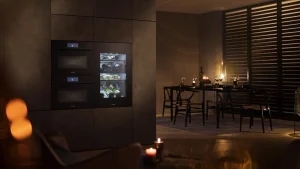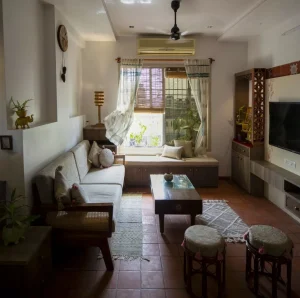
Owning a historic home is a joy. It’s a connection to the past, filled with character and craftsmanship you just don’t find anymore. That is, until you turn on a faucet and hear a ghostly groan from the walls, or your shower pressure feels more like a timid drizzle.
Honestly, the plumbing in these beautiful old houses can be their biggest… well, let’s call it a “quirky” secret. The challenge is real: how do you preserve the soul of your home while secretly upgrading its veins and arteries for 21st-century living? It’s a delicate dance between old and new.
Well, you can stop feeling like you have to choose between a museum and modern convenience. Here’s the deal: with the right approach, you can have both. Let’s dive into the world of historic home plumbing preservation and modernization.
First, Understand What You’re Working With
Before you swing a single sledgehammer, you need to know what’s hiding behind those plaster walls and under the floorboards. Historic homes often come with a plumbing history lesson, and some of the materials are, frankly, past their prime.
The Usual Suspects: Common Historic Plumbing Materials
You’re likely to encounter a few key players, each with its own set of charms and challenges.
| Material | Era | Potential Issues |
| Galvanized Steel | ~1900-1960s | Extreme corrosion and rust buildup on the inside, leading to terrible water pressure and “orange” water. |
| Lead Pipe | Pre-1930s | Serious health risks from lead leaching into drinking water. Requires immediate attention. |
| Cast Iron Drain Lines | Pre-1970s | Can rust through from the outside-in or get clogged with mineral scale. You’ll know it by the bell-shaped hub connections. |
| Brass & Copper | Varies | Early brass can have lead content. Copper, if installed later, is often a reliable survivor. |
That said, finding lead supply lines or galvanized steel that’s nearly sealed shut from rust isn’t just an inconvenience—it’s a call to action. It’s the first, most critical step in any historic home plumbing upgrade.
The Preservationist’s Mindset: Tread Lightly, Upgrade Smartly
The goal isn’t to gut the place and start over. It’s to perform surgery, not commit demolition. This approach saves you money on plaster repair and, more importantly, preserves the irreplaceable fabric of your home.
Embrace Access Technology (It’s a Game-Changer)
Gone are the days when you had to tear down a wall from floor to ceiling to fix one pipe. Modern plumbers specializing in historic homes use techniques like:
- Pipe Bursting: They pull a new pipe through the old one, literally bursting the old pipe outward as they go. Minimal digging, minimal disruption.
- Trenchless Pipe Lining: Sometimes called CIPP, this involves inserting a resin-saturated liner into the old pipe and inflating it. It creates a “pipe within a pipe.” It’s like giving your old drains a brand-new, seamless interior.
These methods are honestly a historic homeowner’s best friend. They protect your landscaping, your original flooring, and your sanity.
Salvage and Restore When You Can
Those classic, clawfoot tubs? Those elegant, porcelain faucet handles? They were built to last. Often, they just need some TLC.
Seek out a specialist who can re-glaze a tub, replace worn-out washers in old faucets, or even rebuild a vintage valve. It’s almost always worth the effort—both for authenticity and for the sheer quality. A restored original fixture has a story; a big-box store replacement, well, doesn’t.
Strategic Modernization: Where to Splurge and Where to Save
Okay, so you’ve assessed the situation and you’re committed to a sensitive approach. Now, what modern upgrades give you the most bang for your buck without compromising historic integrity?
1. The Unseen Heroes: Water Pressure Regulators and Main Shut-Offs
Old pipes, even new ones in an old house, can be sensitive to modern, high municipal water pressure. Installing a pressure regulator protects your entire system from stress and leaks. And while you’re at it, a new, easy-to-access main shut-off valve is pure gold in an emergency. It’s a non-negotiable in any plumbing retrofit for older houses.
2. Balance Efficiency with Aesthetics
You want a low-flow toilet that actually works, right? The good news is that modern water-saving toilets have come a long way. You can find models that fit the aesthetic—like two-piece, elongated designs—without sacrificing performance.
For showers, consider a pressure-balancing valve. It prevents sudden scalding or freezing shocks if someone flushes a toilet elsewhere in the house. You get modern safety while keeping your vintage showerhead or cross handles.
3. Don’t Forget the Brain: Smart Water Monitoring
This is one modern upgrade that feels like it was made for historic homes. A smart water monitor attaches to your main water line and learns your home’s usage patterns. It can send an alert to your phone if it detects a leak—even a tiny, hidden one behind a wall—potentially saving you from catastrophic water damage.
For a house with old, sometimes fragile plumbing, this is like having a 24/7 guardian angel.
A Realistic Look at Challenges and Costs
Let’s be blunt. This work isn’t usually a simple, cheap weekend project. The very things that give your home its character—plaster walls, narrow access points, unique construction—can make the job more complex for a plumber.
You know, you might run into a joist drilled through in three places for pipes, or find that the “simple” drain replacement requires carefully lifting original heart pine floorboards. This is why you absolutely must hire a plumber who has specific, verifiable experience with historic properties. They’ll know the tricks, respect the house, and won’t be fazed by the surprises.
Costs can vary wildly, but think of it as an investment in the home’s longevity and your peace of mind. Replacing all the supply lines in a 2,000 sq. ft. house could range from several thousand to… well, considerably more, depending on the access. But compare that to the cost of repairing a burst pipe that ruins three rooms of original plaster and flooring. Suddenly, the investment makes a lot of sense.
The Final Turn of the Wrench
Preserving the plumbing in your historic home isn’t about freezing it in time. It’s about stewardship. It’s about respecting the craftsmanship of the past while making thoughtful, invisible upgrades that allow the house to live on comfortably for another hundred years.
You’re not just fixing pipes; you’re becoming a part of your home’s long, ongoing story. And that’s a legacy that flows far beyond the walls.








